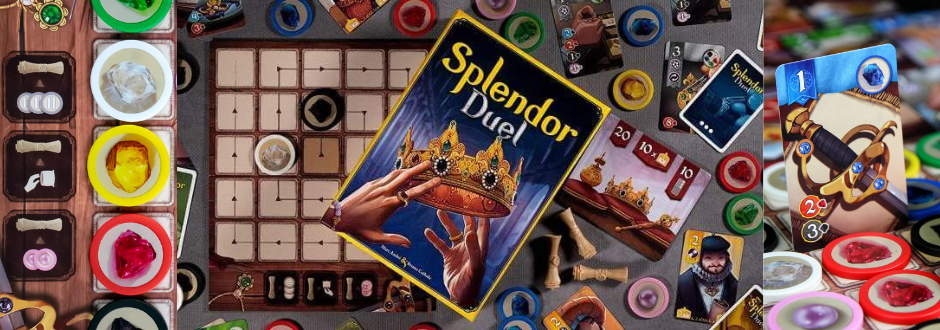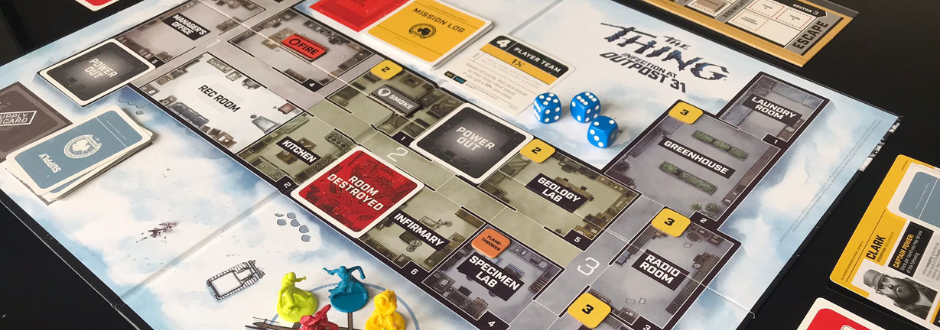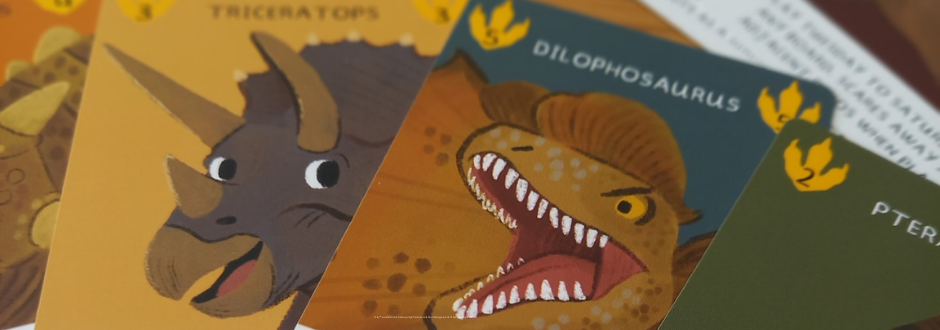
Whilst I would argue it’s always the right time to play board games, if you have an extra day or two off over the Easter break, it’s the perfect opportunity to get a game to the table. Whether you’re spending time with family and cooking up a feast or keeping things more low key, there’s a cracking (I’m so sorry) game to suit the mood!
Wingspan
In my house, we never play Wingspan without mini chocolate eggs, we’ve made it an unofficial expansion. I should say the actual expansions are great, but chocolate just improves the game even further.
In Wingspan you take on the role of an ornithologist and conservationist managing a bird sanctuary. The aim is to create the conditions to attract a variety of birds. The birds that you play provide different benefits which help you attract more birds and build up points that will score at the end of the game.
How to play
Over four rounds you collect food and bird cards, play bird cards and lay eggs.
To play birds there must be space in a suitable habitat. Depending on how many birds you have already played, these spaces may cost you eggs. As well as paying any egg costs, you need to provide the food that the bird eats. You can take different actions, associated with each habitat to gain food and eggs as well as collecting more birds.
· The woodland area allows you to collect food tokens (different birds eat different things) from the birdfeeder.
· The grassland habitat allows your birds to lay eggs.
· The wetland section at the bottom allows you to draw new bird cards.
Each bird has a point value that will score at the end of the game. However, they also have powers that activate at different points in the game and may help you gain extra food, eggs, and cards. Some of the bird powers allow you to build up points to score at the end of the game by storing food or bird cards. The birds that you play also have different features that count towards public objectives. Each player has a personal objective that is selected at the beginning of the game and there’s an opportunity to collect more throughout the game. These objectives might relate to the type of food birds eat, whether they have certain types of words in their name or their wingspan.
After four rounds players score points for the bird cards they have played, public objectives, personal objectives, eggs their birds have laid as well as any stored food and cards. The player with the most points wins.
Why I love it
I’m always happy to play Wingspan (although I have to stockpile mini chocolate eggs for year-round play). It has everything I enjoy in a game, it’s the perfect combination of relaxing and thinky. The artwork and components are beautiful and a pleasure to play with. Every bird in the game is different and the cards include facts about them for an ‘edutainment’ factor. The card combinations create interesting choices, but it’s not overly complex. There are only four actions to choose from, so a game needn’t take too long and feels quite streamlined. It's a good choice if you’re looking for something that’s a little more than a gateway game whilst remaining very accessible. Although competitive, it has pretty limited player interaction, so works well if you’re not a fan of mean ‘take that’ games.
The way that objectives are set-up and the range of unique bird cards offer lots of replayability. So far there are three expansions (plus a very cute fan art set) which are all great. They all add more unique bird cards to the game, so there’s so much variety for longevity. The expansions themselves each offer an element that’s a little different and a small step up in terms of complexity. I love all the expansions and enjoy playing with them in different combinations whilst still enjoying the base game by itself. The most recent expansion can also play as a standalone two-player game which is great, although for me standard Wingspan plays well at two.
It’s also got a great Automa mechanism for solo play included in the base game. I very rarely play solo, but I did give this a try and was really surprised by how well it emulated the multi-player game.
If birds aren’t a theme that you find particularly appealing, ‘there be dragons’ coming soon with Wyrmspan due out in May. It looks absolutely beautiful and introduces some new elements to the game, I’m really looking forward to playing it. Most importantly there are still eggs, so although it’s not compatible with Wingspan, it’s compatible with my unofficial expansion.
Easter vibes scale: 5
The Mini pastel-coloured eggs make me think about Easter in winter.
Chocolate Factory
Although this doesn’t have eggs, Chocolate Factory is possibly a more immediately obvious choice for Easter being all about… chocolate. I don’t have an official-unofficial chocolate expansion for this, but I can confirm that chocolate in any format enhances the game.
In Chocolate Factory you are an entrepreneurial master chocolatier building their factory. The game is all about experimenting to create delicious chocolate products. You hope to entice local shops and exclusive department stores to place orders for your exciting range of chocolate confections!
How to play
Each player board has a roaster and upgrader to refine cocoa beans and make various chocolate products throughout the game. There is also a chute to move chocolate from the production line to your storeroom ready for dispatch. Players have seven tiles that make up a conveyer belt which moves throughout the ‘run factory’ phase of the game.
The game takes place over six rounds or days, at the beginning of each players receive coal to power their factory. They also draft new factory parts to enhance their player board and employees who provide benefits, powers, and access to the different department stores to fulfil orders.
After drafting, production begins, there is a morning, lunch, and evening shift. At the beginning of each shift a cocoa bean is added to a conveyor belt tile which pushes the other tiles through the factory. Depending on the factory parts that you’ve drafted and how you’ve placed them on your player board you can build powerful combinations. As the tiles move along the conveyer belt players can pay coal to activate the adjacent factory parts, allowing them to manipulate and upgrade chocolates.
At the end of each day players can fulfil orders at a department store as well as meeting the orders placed by small, medium, and large corner shops. Corner shop orders are personal objectives which score as they are completed and allow you to take more orders. The department store orders are public objectives, and the progress that you make over the course of the game is scored at the end.
After six days the game ends. In final scoring, points are available for the orders that you have fulfilled at department stores, depending on how these compare to other players. Chocolates or coal left at the end of the game also score a point and the player with the most points wins.
Why I love it
Chocolate Factory meets so much more than just chocolate cravings for me. The game play provides a really satisfying puzzle with plenty of strategy. The minimal set-up, tear-down and simultaneous play, make it a game that I find easy to get to table and play in an hour or less. However, it’s still full of crunchy decision making and I get everything that I would want from playing a big heavy Euro game.
I struggle to think of many, if indeed any, Euro games that have integrated theme so well. It’s an engine building game in which you actually build a factory, with a moving conveyor belt at the core of the game.
Although the theme may appeal to younger players, it’s certainly towards the slightly more complex end of the scale, so if you’re playing with family, it’s a better choice for older teens than younger children. A really key part of the game is deciding where to place the factory parts you draft, as it dictates which type of chocolates can be manipulated, upgraded and made available for orders. As well as being too challenging for younger players, it may also not be an ideal choice if you’re prone to analysis paralysis. However, if that doesn’t put you off it’s such a great problem-solving game and as it progresses being able to pull off a combination of upgrades is extremely satisfying.
I have the deluxe edition which I think is worth splurging on for a comparatively small difference in price, but the components in the standard edition are still absolutely lovely.
Easter vibes scale: 4
There are no eggs, but there’s plenty of chocolate.
Dixit
I always think about Easter when I play Dixit because of the super cute bunny meeples (bunples?) It’s a gentle game which is more about the experience of playing than the scoring. If you’re with non-board gamey folks, I’ve found Dixit can convert even the most committed board game sceptics.
In terms of theme, Dixit is really all about creativity. Throughout the game each player takes turns at being a ‘storyteller’.
How to play
Players have a hand of six cards with abstract, sometimes strange, illustrations. In each round one player is the storyteller and describes one of their cards with a phrase, poem, song lyrics or a single word, anything they can think of. The other players select one of their cards that they think best fits the storyteller’s description. After shuffling, the storyteller reveals all the cards and using a dial the other players secretly select which they think is the storyteller’s card. Once everyone has done this the votes are revealed.
Although this isn’t a heavy game full of strategy it’s not without tactics. There’s a sweet spot for scoring points as the storyteller. If everybody guesses the storyteller’s card correctly, the storyteller receives no points. If nobody guesses correctly, again the storyteller receives no points. Therefore, when you’re taking a turn as the storyteller you need to provide a clue that doesn’t describe their card so perfectly everybody will select it. Still, it can’t be so obscure that nobody selects it. If a range of cards are selected in voting, anyone correctly identifying the storyteller’s card scores points and any player whose card was selected as the storyteller’s will score points too. The first person whose bunny meeple reaches 30 on the points track is the winner.
Why I love it
It’s a great choice to bring out when you’re not sure how comfortable someone is playing games. It’s an easy-going game which I find is a good choice if you’re with players who worry about not being good at games. Moreover, the pace and style of the game doesn’t encourage ruthless, cutthroat play. Without a complex rule set, it takes barely any time to learn, plus the minimal set-up means you can be playing within minutes. There’s no text on the cards or board, so it doesn’t require reading or counting, intricate strategy or tactics. The rules are incredibly simple all of which make it a great family choice, perhaps unsurprisingly it won the Spiel des Jahres prize for general audience games in 2010. Although it’s a game that’s been around a while now, it still feels pretty unique amongst my board game collection. I can’t think of anything else that fosters and rewards creativity in quite the same way, or that so many people are happy to play.
Easter vibes scale: 3
There’s no eggs or chocolate, but there are bunnies!
Whatever you’re doing this Easter, hopefully there will be time for playing some games. I’ll certainly be playing these over the Easter break, but year-round too.











